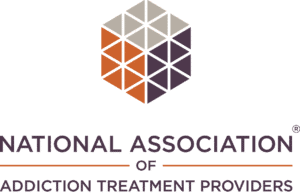Reclaiming Your Life: The Future of Medication-Assisted Treatment (MAT) with Personalized Approaches & New Medications
Medication-assisted treatment (MAT) has become a cornerstone of addiction recovery. This evidence-based approach combines medications that manage cravings and withdrawal symptoms with behavioral therapies to address the underlying cognitive and social aspects of addiction. However, the future of MAT is even brighter, with exciting possibilities for personalization and innovative medications on the horizon.
Why is MAT so Effective?
Traditional addiction treatment often focuses solely on behavioral therapy, with limited success. Addiction, however, is a complex brain disease characterized by changes in the reward system and impulse control. MAT bridges this gap by providing pharmacological support, making recovery more achievable.
Here’s how MAT works:
- Opioid Use Disorder (OUD): Medications like methadone, buprenorphine, and naltrexone reduce cravings and withdrawal symptoms, helping individuals to focus on therapy and rebuilding their lives.
- Alcohol Use Disorder (AUD): Medications such as acamprosate and naltrexone help regulate neurotransmitters disrupted by alcohol dependence, reducing cravings and relapse risk.
Personalization: A Game-Changer in Addiction Treatment
The “one-size-fits-all” approach to addiction treatment is giving way to a more personalized future. Here’s how MAT is evolving to suit individual needs better:
- Genetic Testing: Understanding a person’s genetic makeup could influence medication selection and dosage. For instance, some individuals metabolize medications differently, requiring adjustments for optimal results.
- Comorbidity Focus: Many people with addiction struggle with co-occurring mental health conditions. Personalized MAT plans can incorporate medications that address both addiction and mental health needs.
- Patient Preferences: Involving patients in treatment decisions fosters a sense of ownership. Exploring different medication options and delivery methods (e.g., tablets and injections) allows for a more comfortable and practical treatment experience.
New Medications on the Horizon
Researchers are actively developing new medications to improve treatment outcomes. Here are some promising areas of exploration:
- Long-Acting Formulations: Medications with longer-lasting effects could improve treatment adherence and reduce the risk of relapse associated with missed doses.
- Combination Therapies: Combining medications with different mechanisms of action could offer a more targeted approach, addressing multiple aspects of addiction.
- Medications for Stimulant Use Disorders: While MAT is well-established for opioid and alcohol use disorders, new medications are being explored for stimulant addiction, which is a growing concern.
Looking Ahead: A Brighter Future for Recovery
The future of MAT is brimming with possibilities. By incorporating personalized approaches and innovative medications, we can revolutionize addiction treatment:
- Increased Treatment Accessibility: Personalized care plans and long-acting medications can make MAT more accessible and convenient for individuals seeking recovery.
- Reduced Stigma: Highlighting the effectiveness of MAT can help subside the stigma associated with addiction treatment, encouraging more people to seek help.
- Improved Quality of Life: Effective treatment empowers individuals to reclaim their lives, rebuild relationships, and contribute positively to society.
Unlocking the Potential of MAT
While MAT holds immense promise, there are still challenges to overcome:
- Expanding Access: Increasing access to qualified healthcare providers who can administer MAT is crucial.
- Insurance Coverage: Ensuring adequate coverage for MAT is essential to make it a viable option for everyone.
- Combatting Stigma: Educating the public about the science behind MAT can dispel misinformation and encourage broader acceptance.
Taking Charge of Your Recovery
If you or someone you know is struggling with addiction, MAT can be a powerful tool for recovery. Here’s what you can do:
- Talk to Your Doctor: Discuss your options and determine if MAT suits you.
- Research Treatment Centers: Look for facilities with qualified MAT providers and a personalized approach.
- Embrace Support: Connect with support groups and therapy to complement your MAT program.
The future of addiction recovery is personalized, evidence-based, and hopeful. With advancements in MAT, we can empower individuals to overcome addiction and build a better future.









